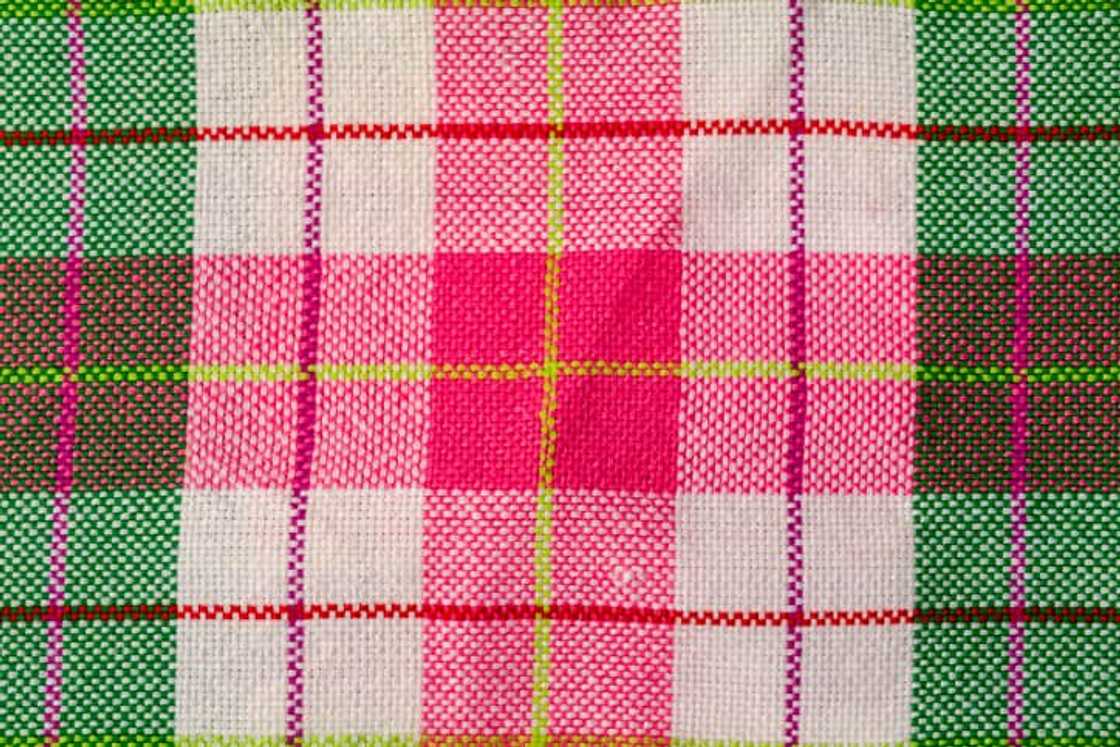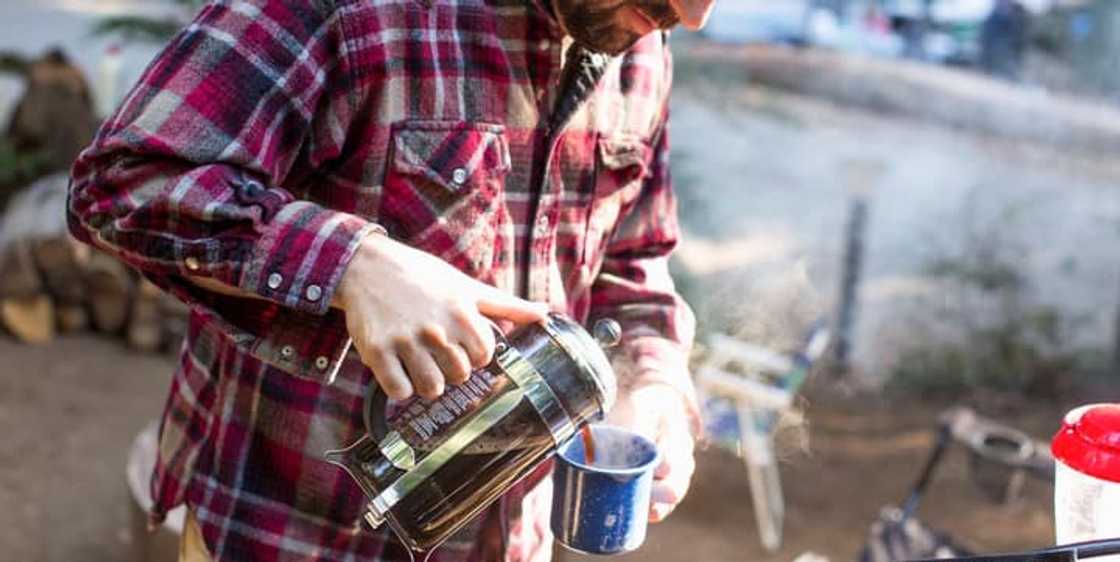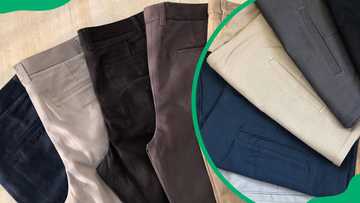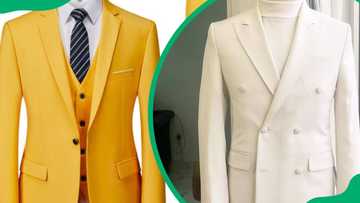What is flannel? Origins, properties, and fashion uses
Flannel is a staple fabric in every home wardrobe. Flannel covers you if you need warm and comfy clothing for the cold seasons. It is a comfy, snuggly, fuzzy, and soft fabric with humble beginnings as work clothes and high-end fashion wear. So, what is flannel, and how does it differ from other fabrics?

Source: Getty Images
TABLE OF CONTENTS
Over the years, flannel has become a fashion trend in shirts, jackets, and bedding. It is majorly produced in China, Australia, and India. Companies like Moda Fabrics, Robert Kaufman, and Windham Fabrics also produce and utilize this fabric. Like cotton, silk, chiffon, and other fabrics, flannel has a unique way of maintaining it to help retain it.
What is flannel fabric?
Flannel is a soft, woven material and medium-weight fabric known for its fuzzy texture. It is made from cotton, wool, or synthetic fibres. The fabric is woven as a plain or twill weave and as features of distinctive patterns like plaid or tartan. The fabric's soft finish is achieved through napping, which raises the fibres for a brushed texture.
So, generally, what are flannels? They are typically soft, brushed cotton or fleece clothing designed to provide warmth and comfort. They are often worn as casual, relaxed-fit shirts or loungewear and are commonly associated with lumberjack or outdoor styles.
What is a flannel shirt?
A flannel shirt is a casual, comfortable shirt made from a flannel fabric. Flannel shirts meaning entail:
- Lightweight, soft, and brushed cotton or wool;
- Plaid or checked pattern (often in red and black, but also in other colours);
- Relaxed fit and long sleeves;
- Button-front closure;
- Warm and cosy texture.
What is flannel made of?
It can be crafted from wool, cotton blends, and synthetic fibres like polyester and nylon. It can also be plant-based materials like Scots pine fibres.
What are the different types of flannels?
There are eight types of this fabric, which include:

Source: Getty Images
- Wool flannel: This is traditional and popular in Europe. It is made from wool and is known for its durability. It is used for suits and elegant attire.
- Cotton flannel: They are soft, warm, and popular for casual wear, pyjamas, and bedding.
- Synthetic/mixed flannel: Made from polyester or nylon, it is stain-resistant but less soft.
- Ceylon flannel: It is a wool-cotton blend and is soft.
- Baby flannel: It is lightweight and used for children's clothing.
- Diaper flannel: Known to be soft, absorbent, and napped on both sides for cloth diapers.
- Flannelette: It imitates the fabric and is made from synthetic materials, which are less durable but more comfortable.
- Vegetable flannel: It is made from Scot's pine fibres, an alternative for those allergic to wool. Léopold Lairitz invented it in Germany in the 1800s.
What is the origin of flannels?
The fabric originated in 16th-century Wales, where a similar coarse woollen material was first produced. Its popularity increased in the 17th century with the introduction of carding mills, expanding production. By the 19th century, different regions like Wales, Yorkshire, Lancashire, and Ireland produced unique fabric types.
The term likely comes from the Welsh word "gwlanen," meaning "woollen cloth," though some suggest it originated from the Old French word "flaine."
Welsh textile workers in the late 1600s created fabric from excess sheep wools using a carding process to soften the woollen yarns. The fabric became popular among Welsh farmers and the working class for its durability against harsh climates.
What is flannel vs plaid?
It means choosing flannel or plaid. However, this notion must be corrected because flannel is a soft fabric, while plaid is any fabric woven of differently coloured yarns in a crossbarred pattern.
Plaid is also a pattern that can be printed on various materials. Though many flannel items feature plaid designs, they are different. The fabric refers to the material, and the plaid refers to the design, so the plaid can be on any fabric, not just flannel.

Source: Getty Images
What are flannels used for?
The fabrics are used for clothing like semi-formal shirts, sweaters, vests, cardigans, and blouses. They can also be used for accessories like bags, purses, and belts. Finally, the fabrics produce home textiles, including bedsheets, blankets, and bedding (such as pyjamas).
What are the properties of flannel?
Flannel material is mainly characterised by its soft and warm texture. But then, What makes a flannel a flannel? The ultimate is the napped finish on one or both sides of the fabric. Below are some of the criteria:
- Fuzzy texture
- Twill weave
- Brushed or unbrushed texture
- It can be made from different materials
- Allows air to pass through (breathable)
- Helps keep you dry
- Stretches a bit
- It might get a bit fuzzy or bumpy over time
Can you wash flannel shirts?
Flannel shirts can be washed, but it is essential to do so with care. To keep your essential type of shirt soft and in good condition, note the following:
- Use warm or cool water, avoiding hot water;
- Select a gentle wash cycle;
- Opt for a mild detergent without bleach;
- Add a fabric softener or white vinegar to reduce pilling;
- Avoid using regular liquid fabric softeners, as they can stiffen the fabric over time;
- Consider air-drying or using a low heat setting in the dryer.
Can you iron a flannel?
You can iron the fabric, but it is important to be gentle and cautious to avoid damaging it. Here are some tips:
- Use a low heat setting (usually cotton or wool setting);
- Use steam, but be cautious not to apply too much;
- Iron while the fabric is slightly damp but not soaking wet;
- Avoid ironing over buttons, zippers, or other hardware;
- Do not iron the fabric too frequently, as it can cause wear and fading;
- Test a small, unnoticeable area first to ensure the iron will not damage the fabric.
Is flannel 100% cotton?
The fabric is not always 100% cotton. While cotton is a common material used to make the fabric, it can also be made from other materials like wool, synthetic fibres, or blends of different fibres.
Is flannel hotter than cotton?
Due to its thickness, density, and brushed texture, the fabric tends to be warmer than cotton. Because of this, it can trap warm air for insulation.
Does flannel shrink?
The fabric can shrink, especially if it is made of cotton. Avoid exposing it to high temperatures during washing and drying to prevent or minimise shrinkage. Also, choose gentle cycles and go for high-quality materials. Mainly follow care label instructions
Knowing what is flannel is important when picking out a fabric for a more gentle touch. This fabric has upgraded from just lumberjack attire to a top clothing, accessory, and home textile product.
READ ALSO: How to measure for a suit: Suit measurement tips for the perfect fit
As published on Briefly, knowing how to measure for a suit is essential to achieving the perfect fit. You can ensure a tailored look that exudes confidence and style by following precise measurement tips.
Mastering how to measure for a suit, from chest and sleeve length to waist and inseam measurements, is critical to looking sharp and sophisticated.
Source: Briefly News






